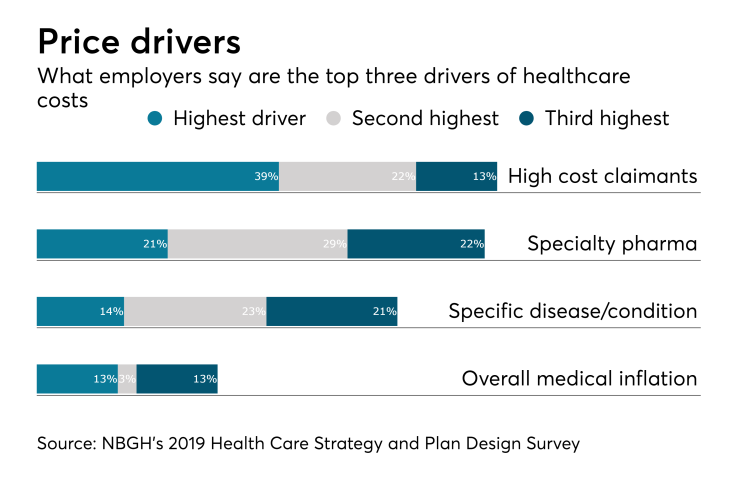Self-funding and reference-based pricing are hot topics with small businesses. They are so popular, in fact, that a recent survey shows an overall increase in their 2019 projection of small employer clients having a reference-based pricing health benefit plan design. Small businesses are seeing these savings, and they’re starting to explore how reference-based pricing can help them, too.
Before we get to why self-funded plan designs that use reference-based pricing are becoming more popular for small businesses, let’s review the basics.
Reference-based pricing is a methodology of calculating payment to providers for covered treatments and services using a “reasonable fee” based on a reference point. A common reference point is the Medicare fee schedule. Some self-funded health benefit plans calculate the reasonable fee as a percentage of the Medicare fee schedule to determine reimbursement for services rendered.
Bottom line: Self-funded health benefit plan designs that use reference-based pricing can allow for a great deal of flexibility with a variety of arrangements and overall cost-savings.

So, what’s behind the recent trend toward reference-based pricing for smaller employers? A few key factors.
First, a self-funded health benefit plan design that uses referenced-based pricing can mean less expensive coverage for employees and employers.
When coupling a self-funded health benefit plan with stop-loss insurance, reference-based pricing provides an affordable way to extend coverage to employees through lower employee contributions. So, employees are happy because they’re saving money.
And employers are happy, too, because they’re allowing for more coverage to more employees. There’s a refund potential for employers if claims dollars are less than funded. There’s also a premium tax savings of around 2% since self-funded claim dollars are not subject to state health insurance premium taxes.
Moreover, self-funded health benefit plan designs that utilize reference-based pricing may also include transparency reports with aggregate health claims data and demographic information, which allow employers to better manage costs. Overall, anytime you can design a plan that’s beneficial for employees and employers, it’s a win.
Second, reference-based pricing can provide employees more flexibility when it comes to choosing a provider. Typically, an important feature of any health benefit plan design for employees is the ability to choose the provider they want. Some self-funded plan designs that use reference-based pricing give employees the chance to pick the provider that’s right for them. And, when employees are happy with their health plan, employers are usually pretty happy, too.
Finally, self-funded plan designs that use reference-based pricing can help employees become smarter healthcare consumers because of all the transparency and choice involved. When employees better understand the healthcare processes and system, costs come down for both the employee and employer. In fact, just understanding their coverage better may help employees better use their health benefit plans.
For example, using telemedicine when appropriate, establishing a relationship with a primary care doctor and using client advocacy services can all help employees better utilize their health benefit plans. In the end, employees get smarter about how they manage their care, and employers win with reduced costs.
These factors are driving more small businesses to consider reference-based pricing self-funded health benefit plan designs with stop-loss insurance. And, for good reason. These plan designs can give employers the opportunity to offer their employees affordable health benefits, provide more choice in their health plans and providers, and encourage more employee engagement. While moving to reference-based pricing may be too big of a leap for some employers, self-funding continues to provide a means for employers to offer comprehensive major medical health benefits at lower costs.





